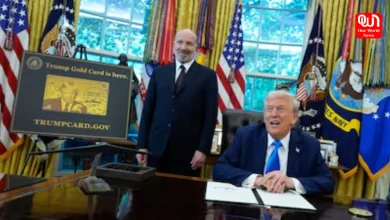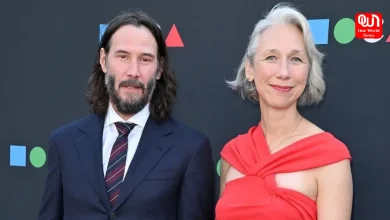Unicef India conducts first-ever comprehensive national nutrition survey. Here’s the data

New India data from birth to adolescence will help combat malnutrition and diseases in children
NEW DELHI, 11 October 2019: India’s Ministry of Health and Family Welfare (MoHFW) this week released the results of the nation’s first-ever Comprehensive National Nutrition Survey (CNNS), conducted from 2016-18 in 30 states/Union Territories across the country with technical support by UNICEF. The survey was supported through generous financial support from Aditya and Megha Mittal, the United Kingdom-based philanthropists.
The groundbreaking national study is one of the largest micronutrient surveys ever conducted globally covering anthropometric assessments of 112,000 children from 0-19 years of age, including more than 51,000 biological samples for children’s micronutrient status and risk factors for non-communicable diseases.
According to the CNNS, in India, 35 per cent of children under five are stunted, 17 per cent are wasted and 33 per cent are underweight. For the first time, this study provides national-scale evidence and information on a broad set of indicators for all children and adolescents 0-19 years old which can be used to target scaled up nationwide solutions.
The CNNS survey shows that there is some progress in reduction in malnutrition, as well as effective reach of Government programmes to prevent Vitamin A and iodine deficiency in children 1-4 years. At the same time, the survey highlights that overweight and obesity increasingly begin in childhood with a growing threat of non-communicable diseases like diabetes (10 per cent) in school-aged children and adolescents.
The release of the survey has stimulated a national discussion
The release of the survey has stimulated a national discussion about how to analyse this data to target effective programmes combatting child malnutrition and non-communicable diseases.
Health Minister, Dr. Harsh Vardhan commented on the release of the national survey, “The CNNS gives us the first comprehensive national set of data about child and adolescents nutrition, including the 5-14 year age group for the first time. This will help the Government accelerate progress using evidence-based policies and programmes to combat malnutrition and non-communicable diseases like diabetes in children and adolescents.”
Speaking on the release of the study, Dr. Yasmin Ali Haque, UNICEF India Country Representative, said, “The CNNS is an amazing wealth of information. It is time for evidence-driven policy and action to save and children’s lives and help every child fulfil potential. UNICEF is proud to partner with the Ministry of Health and Family Welfare in this mammoth achievement. We are enormously appreciative of the vision and commitment of Megha and Aditya Mittal. The study would not have been possible without their support.”
Expressing their vision for India and their expectations from the outcome of the study, Megha and Aditya Mittal, in a joint statement, said, “We wanted to support a project that had a strong potential to support long-term systemic change. The CNNS survey is unique in its size, scale, scope and potential for driving change. We hope the data and analysis will lead to policy changes and implementation of nutrition education programmes that will result in children having more access to the nutrients they need to fulfil their potential and make the most of their lives. This is important for every child and also for India, which relies on the energy and skills of its people to continue to drive change.”
Read more: World Mental Health Day let’s take a look at Suicide Trends in India
Key findings:
The POSHAN Abhiyaan 2018-22 has ambitious annual targets to reduce child undernutrition (stunting and underweight) and low birth weight (2 per cent per annum) and anaemia across age groups (3 per cent per annum) including by creating a mass movement (Jan Andolan) for good nutrition in India. The CNNS figures reveal that school-age children and adolescents are still at risk of malnutrition and a lot of ground still needs to be covered:
- 1 in 4 adolescents aged 10-19 years remain thin for their age
- 5 per cent of adolescents aged 10-19 years old were overweight or obese
Another major concern for India is the high number of anaemic children, adolescents and women in the country. Numerous studies suggest that poor eating habits (not eating enough iron and vitamin C-rich foods including fruits and vegetables) and limited access to healthcare are main causes for such a high prevalence of anaemia. According to CNNS anaemia affects the youngest children and female adolescents the most:
- Anaemia was significantly higher in children aged 1-4 years (41 per cent) compared to other age groups. Anaemia prevalence in female adolescents aged 10-19 (40 per cent) years was two times higher than male adolescents (18 per cent).
- Overall, 41 per cent of children from 1-4 years, 24 per cent of those 5-9 years and 29 per cent of adolescents 10-19 years were anaemic. CNNS used different methods for anaemia estimation (venous blood and laboratory testing) and results should not be directly compared to the National Family Health Survey data.
- Other nutritional causes of anaemia including vitamin B12 were measured. Vitamin B12 deficiency ranged from 14 per cent to 31 per cent in 1-19 years of age and was highest among adolescents.
The growing threat of non-communicable diseases were found in school-age children, with 10 per cent pre-diabetic and high triglycerides. Four per cent of adolescents had high total cholesterol and high low-density lipoprotein (LDL). Hypertension (high blood pressure) was found in 5 per cent of adolescents.
The CNNS report, factsheets and key indicators are available on https://mohfw.gov.in and https://nutritionindia.info.
About UNICEF
UNICEF works in some of the world’s toughest places, to reach the world’s most disadvantaged children. Across 190 countries and territories, we work for every child, everywhere, to build a better world for everyone. For more information about UNICEF and its work for children, visit www.unicef.org.
Have a news story, an interesting write-up or simply a suggestion? Write to us at info@oneworldnews.com







